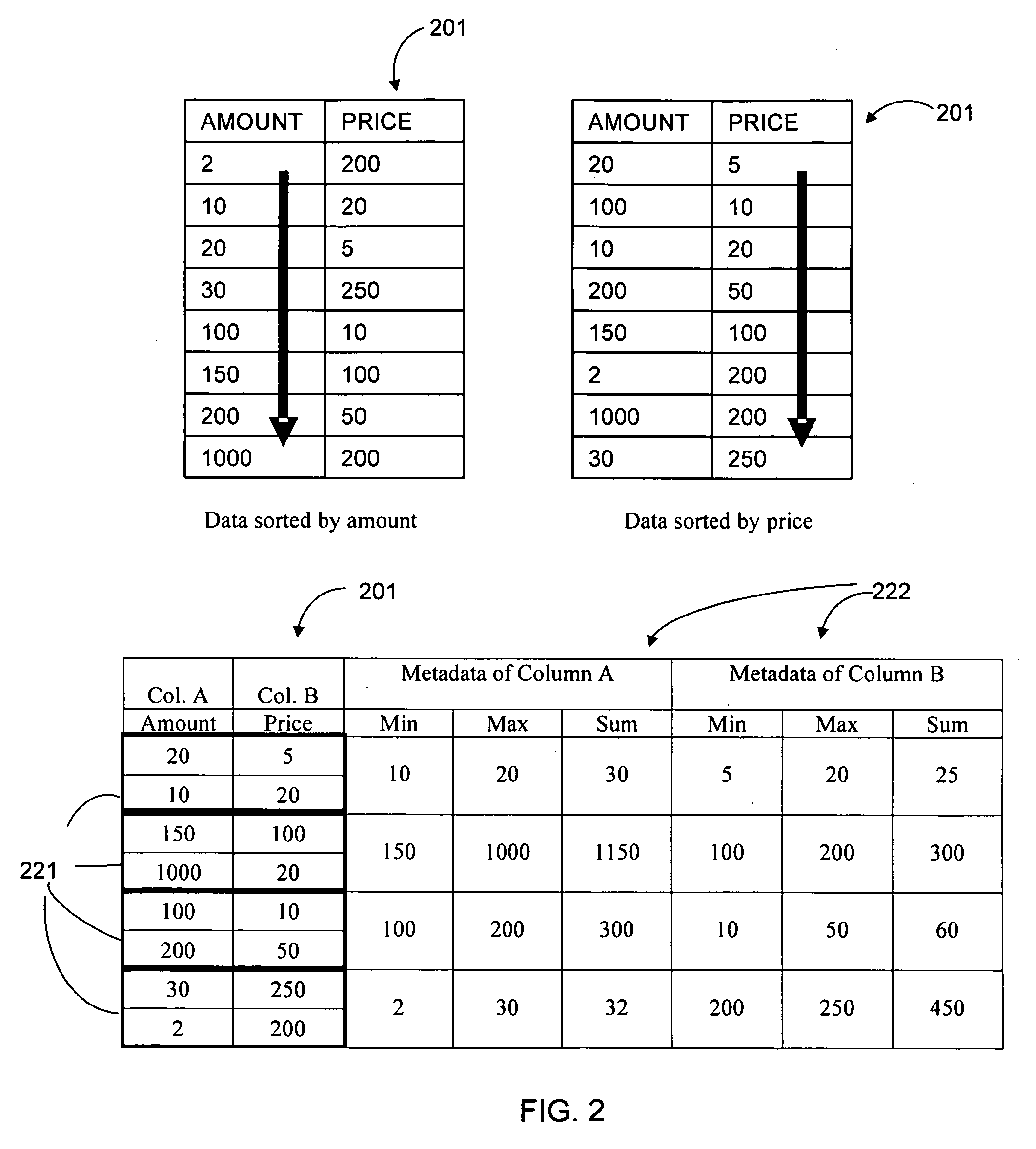Methods and systems for database organization
- Summary
- Abstract
- Description
- Claims
- Application Information
AI Technical Summary
Benefits of technology
Problems solved by technology
Method used
Image
Examples
Embodiment Construction
[0035]Methods and systems for optimizing the organization of a relational database (RDB) so as to improve the efficiency of executing search queries on the database will now be described. Optimizing the organization of a database may mean grouping (or “clustering”) data records belonging to the RDB in such a way that data synopses computed for selected data groups are, on average, most useful to the conduct of searches. Such data synopses are referred to as “metadata parameters” in the present specification and claims. A measure of the “usefulness” of a metadata parameter is referred to hereinafter, in the specification and claims, as a “precision factor”. A precision factor may characterize, for example, the homogeneity of data within a data unit, and be calculated from information contained within the metadata parameters.
[0036]Query execution performance may be enhanced by clustering RDB records into more optimal groups. “Clustering”, as the term is used hereinafter in the specifi...
PUM
 Login to View More
Login to View More Abstract
Description
Claims
Application Information
 Login to View More
Login to View More - R&D
- Intellectual Property
- Life Sciences
- Materials
- Tech Scout
- Unparalleled Data Quality
- Higher Quality Content
- 60% Fewer Hallucinations
Browse by: Latest US Patents, China's latest patents, Technical Efficacy Thesaurus, Application Domain, Technology Topic, Popular Technical Reports.
© 2025 PatSnap. All rights reserved.Legal|Privacy policy|Modern Slavery Act Transparency Statement|Sitemap|About US| Contact US: help@patsnap.com



